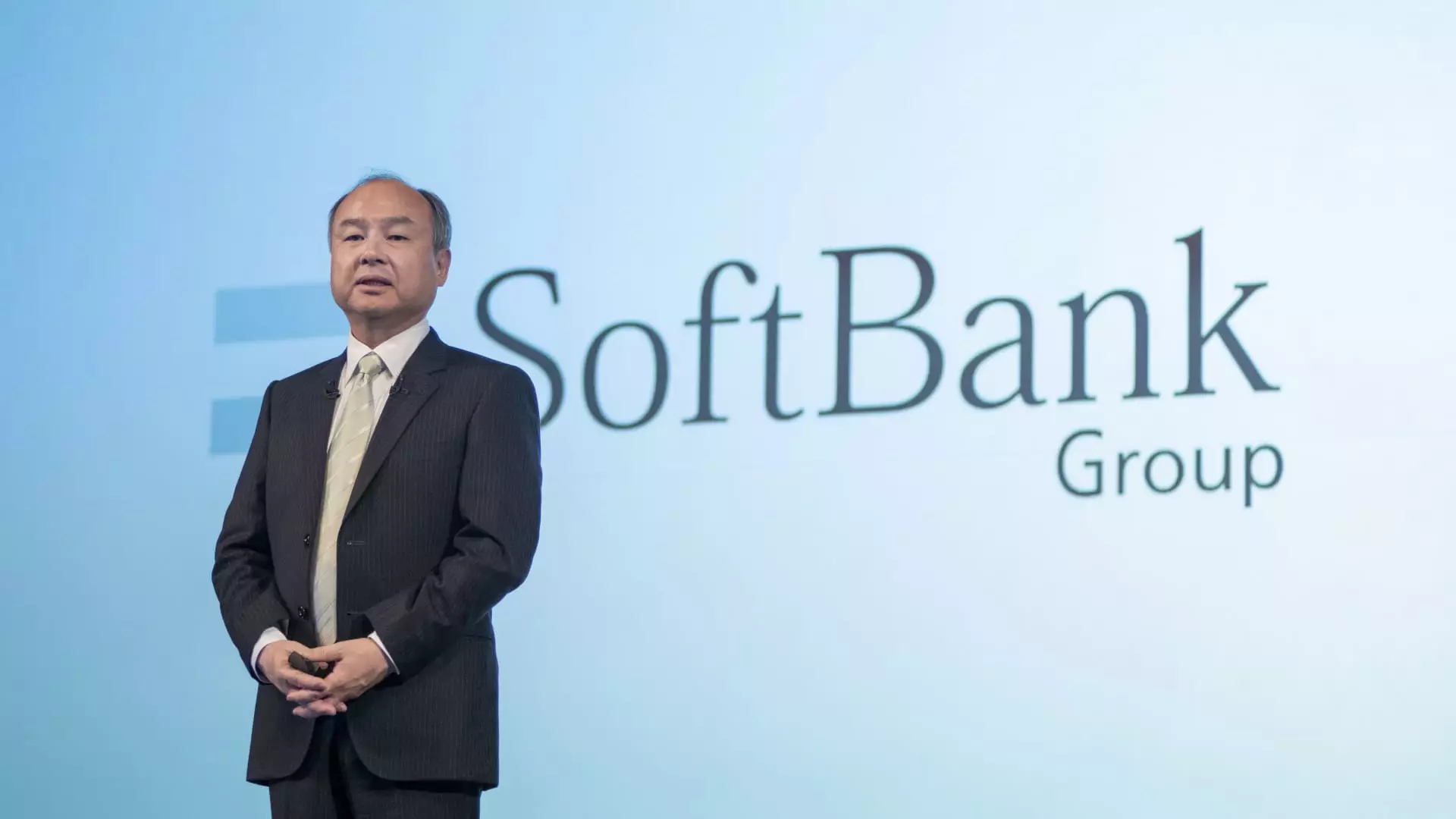In a remarkable turn of events, SoftBank Group has reported a striking profit of 608.5 billion yen (approximately $3.96 billion) from its Vision Fund for the fiscal second quarter ending September 30. This marks a significant turnaround from the previous quarter, where the company returned to profitability after a challenging start to the fiscal year. The broader scope of the Vision Fund, which also includes operational expenses and returns from third-party investors, revealed an overall gain of 373.1 billion yen, rebounding from a loss of 204.3 billion yen in the first fiscal quarter. This financial bounce-back underscores the volatility and unpredictability inherent in high-stakes investment sectors.
The resurgence can largely be credited to valuation gains from notable portfolio companies, particularly Coupang, a leader in e-commerce based in South Korea, and Didi Global, the Chinese ride-hailing company. Additionally, there were positive adjustments to the valuation of ByteDance, the parent company of TikTok, suggesting a favorable shift in the market dynamics surrounding these tech giants. The re-evaluation of these stakes demonstrates SoftBank’s adaptive strategy in response to shifting valuations in the technology sector.
The Dichotomy of Vision Fund Performances
While the Vision Fund 1 exhibited robust gains, contrastingly, the Vision Fund 2 reported a net loss of 232.6 billion yen due to declining share prices from companies like AutoStore and Symbotic. This divide highlights the challenges and fluctuations faced by SoftBank’s investment strategies. The ongoing rollercoaster of successes and failures within its portfolio reflects both the risks and opportunities that accompany heavy investments in emerging technologies.
Adding another layer to the complexity, SoftBank has found itself benefitting from the highly publicized IPO of Arm Holdings in September 2023. Holding a substantial majority stake of around 90%, SoftBank reaped rewards from this significant event, bolstering its financial figures. The focus on Arm underlines the company’s strategic pivot toward developing technologies integral to the booming artificial intelligence (AI) market, positioning itself at the forefront of this rapidly evolving landscape.
Masayoshi Son, SoftBank’s founder and CEO, has been vocal about his optimism regarding artificial intelligence. He posits a future where AI surpasses human intelligence by a staggering margin—describing the evolution of AI as potentially reaching a level of cognition 10,000 times superior to that of humans within the next decade. This ambitious projection coincides with SoftBank’s plans to invest $500 million in OpenAI’s latest funding round, a clear indication of its commitment to leverage advancements in AI technology.
As demand surges for components related to AI, particularly chips and data center GPUs, SoftBank’s bet on Nvidia—a tech powerhouse valued at approximately $3.57 trillion—illustrates its calculated approach to capitalize on future technological trends. This focus not only reflects a strategic interaction with key players in the AI domain but also positions SoftBank as an influential force in shaping the future of technology.
Despite these promising developments, SoftBank faces mounting pressures from activist investors, notably Elliott Management, which has acquired a significant stake in the company. This involvement has spurred SoftBank to initiate a $15 billion share buyback program, a strategic move aimed at stabilizing and buoying investor confidence. While the group announced plans to repurchase 6.8% of its shares, reporting a completion of 153.8 billion yen in buybacks by the end of the second quarter, the ongoing pressures illustrate the challenging landscape that companies must navigate to satisfy stakeholder expectations.
Additionally, macroeconomic factors such as the fluctuating yen and the broader implications of Japan’s monetary policy have further complicated the investment climate. Analysts predict ongoing volatility which may persist as wage growth aligns with the Bank of Japan’s targets—suggesting potential interest rate hikes in the near future.
SoftBank’s recent quarterly results shine a light on the complexities of investing in technology during uncertain economic times. With a mix of successes and setbacks, the conglomerate is recalibrating its focus around high-growth sectors like artificial intelligence and adapting its strategy to manage external pressures. As it navigates the dualities of the market—capitalizing on strong performers while addressing underperforming investments—SoftBank remains entrenched in the conversation about the future of technology. Whether it can sustain this momentum amidst evolving challenges will be a narrative worth watching in the coming quarters.

